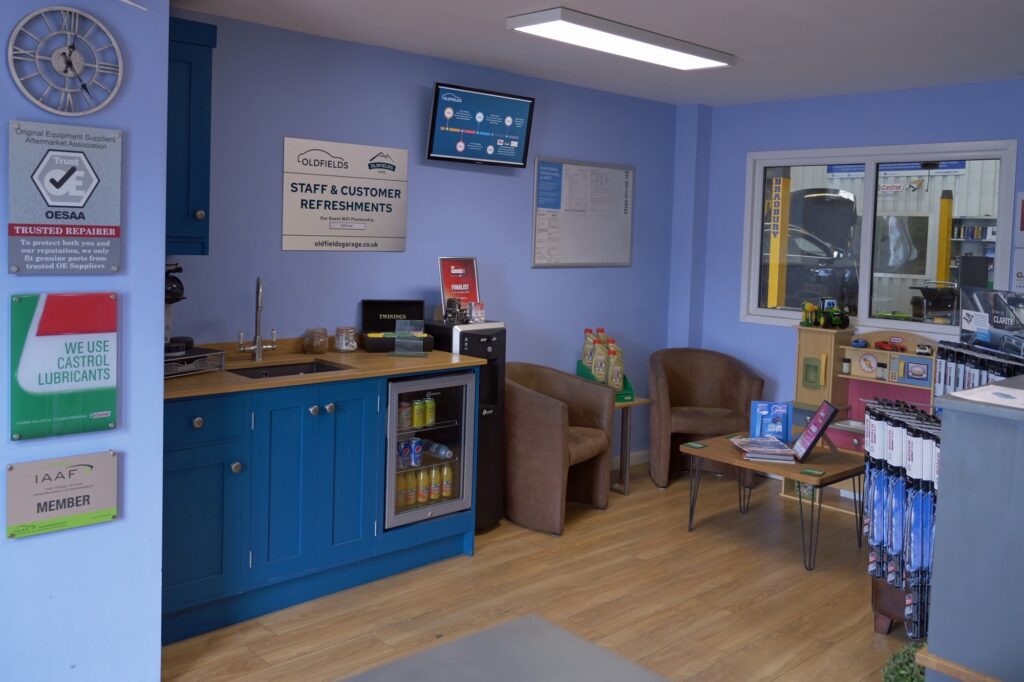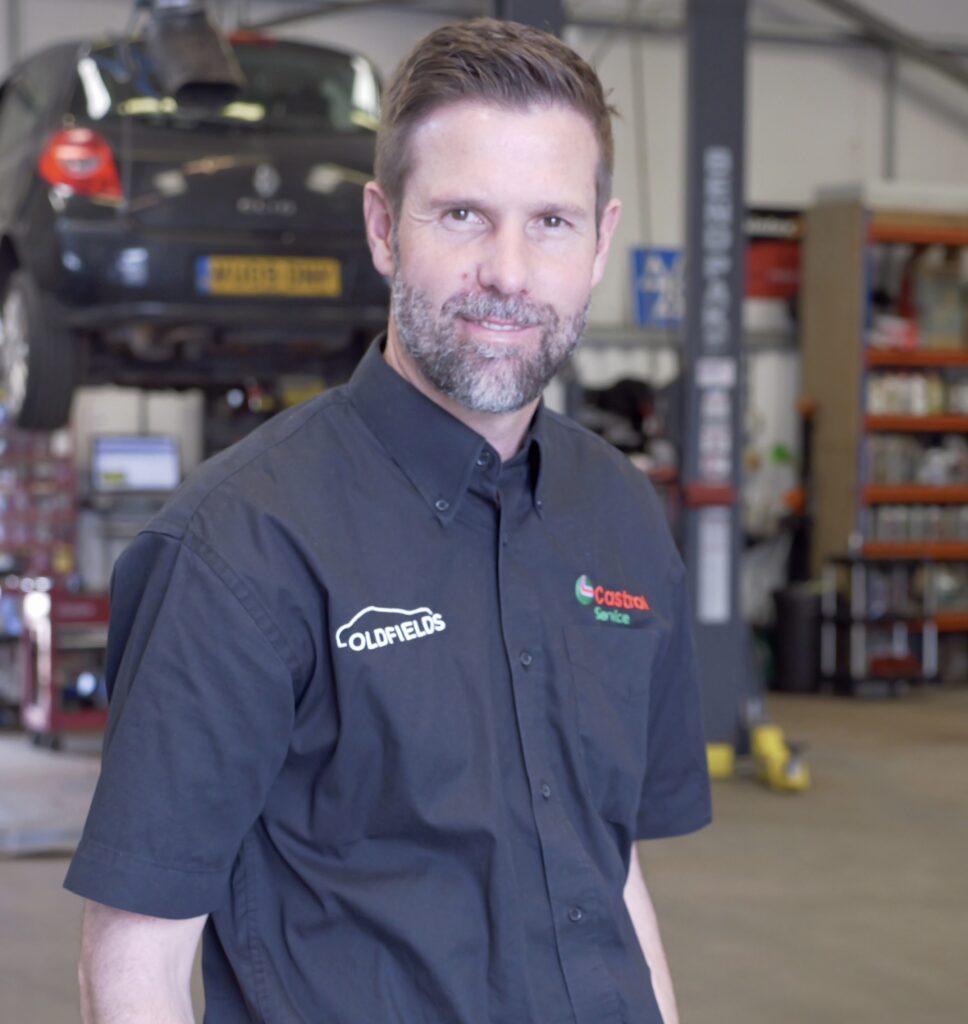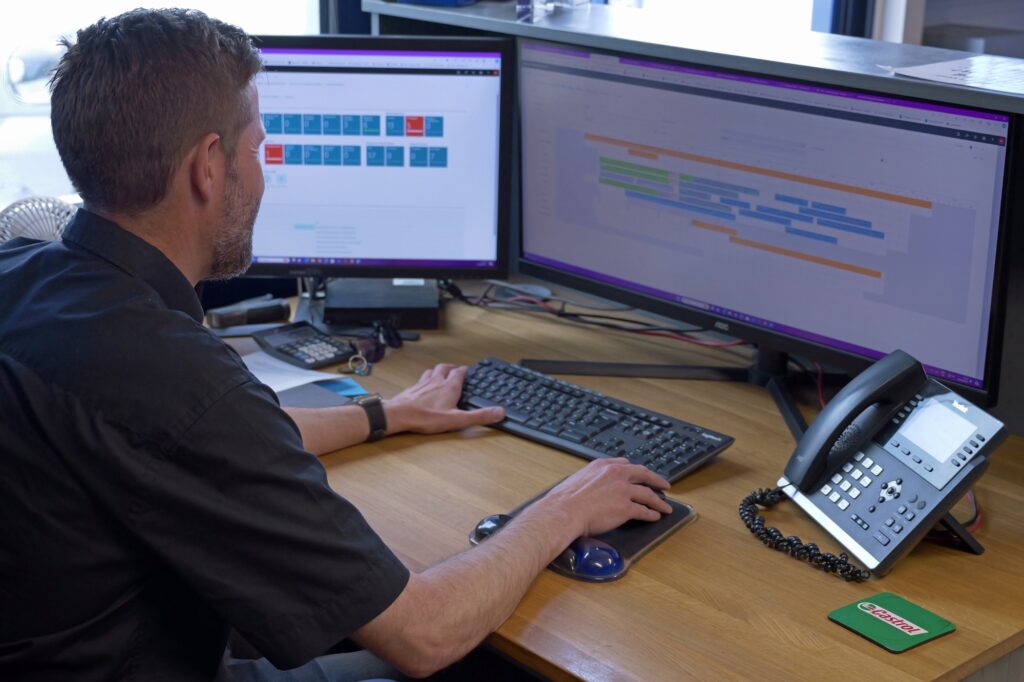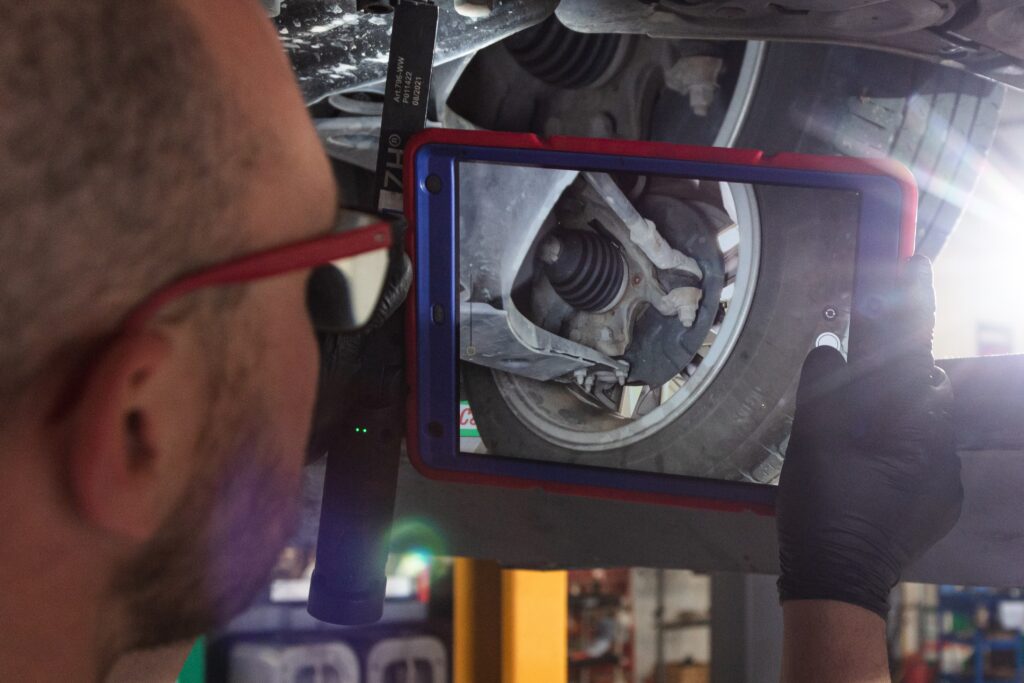Following lots of feedback, I wanted to expand upon an area that came up in our #ChewTheFat discussion about how our business, Oldfields Garage Services combines a very personalised service with digital communications. I believe this is how a modern independent garage should operate. The integration of digital communications, such as online vehicle inspections, text messages and email updates, into traditional service methods can create significant value for customers. This combination not only meets the growing expectations of today’s customers but also enhances the overall customer experience by adding a layer of efficiency, visibility, consistency, and the magic that is personalisation.
For context, our business is in rural Herefordshire, with a catchment population of around 11,000 in our town and surrounding villages. We operate from a modern building on an enterprise park having moved from a town centre location in 2010. Our area (and business) is small enough that we personally know a lot of our customers, but we have embraced the digital age through our management system and our customers love it. While I can obviously relate to our business and location, I also think this approach is equally possible, if not more so in areas where there are more chimney pots!

Meeting Customer Expectations
It’s important to think about what today’s customers expect. They expect concise timely and accurate information about their vehicle, when things are due and of course the status of their vehicle repairs while it’s with their chosen garage. Traditional methods of communications, such as phone calls and in-person updates, while still very valuable, can be supplemented with digital communications to ensure customers are kept informed throughout the service process. Automation is much more reliable than human intervention for some of these actions. Telling customers when their MOT and Service is due via text messages and email reminders, is obvious to some, but there are still lots of garages that haven’t embraced this.
Communication at key stages of the repair – such as when the vehicle has been inspected and what’s been identified and priced, when parts are ordered, and when the service is complete – provides customers with real-time information and peace of mind. This level of communication is not a luxury but an expectation in our time-short, digitally connected world.
We all know how transactions happen when buying online; we’ve received your order, it’s being picked, it ready for shipping, it’s on its way and probably the most crucial bit – when to expect the item. This isn’t novel anymore; it’s the norm! We can directly translate that to our industry if you pick apart the stages of communication from reminders through to booking and when the vehicle is in your care. We really need to pay attention to these opportunities to add value to what we are doing through these touch points.
Consistency of information
One of the significant advantages of digital communication is the ability to provide a consistent and repeatable service. Automated systems can ensure that every customer receives the same high level of communication. For example, setting up automated email reminders for MOT, Service and Advisory information puts this at the centre of a customer’s mind. The key thing is this happens automatically, without you needing to remember or committing a resource to making the contact. No customer is left wondering about when their vehicle is due. It’s done. Automatically.
There is also a hidden benefit in that early reminders gives the best chance of enabling smoother scheduling of workflows, reducing the last-minute panic. This consistency builds trust, as customers know they can rely on receiving timely updates every time.
If you think one stage further, booking reminders the day before will not only reduce “no shows” but also gives a great opportunity to provide information on what you need a customer to do. Things like “please leave the locking wheel tool and service book on the seat,” or “we’ll need to have the vehicle in at 8:30am.” You can also condition customers with information on what to expect from you. A great example is explicitly telling a customer that during the day, we’ll update you as your vehicle progresses and after we’ve finished, we’ll sent an electronic vehicle inspection by text and email and not forgetting to tell them that you’ll receive a feedback request in the evening. All of this massively adds value and importantly reduces anxiety for customers. They know what to expect.
In situations where things don’t go to plan, digital communications, online inspections and work authorisation, along with recorded phone calls provide garages a log of activity, ensuring that all customer interactions can be reviewed if needed. This creates a reliable history that can be referenced to improve service and help to resolve any issues that may arise, ensuring that the service experience is not only consistent but also transparent.

Personalising the Customer Experience
I’ve had many discussions with garage owners saying to me “that all this texting and emails makes the service impersonal.” I completely disagree with this view and in fact I’d say it’s quite the opposite. They can be used to enhance personalisation when used thoughtfully. Digital tools can free up time for service advisors to focus on personalised interactions.
While automated messages handle routine tasks, service advisors can spend more time discussing specific customer concerns, providing detailed explanations of repairs, pricing work that’s required, offering great advice and recommendations. Personalised attention acknowledging a customer’s specific needs, preferences, previous service history or even a status update on a vehicle that is currently in your workshop can significantly enhance the customer experience. A text message saying that your vehicle has passed its MOT and will be moving through the workshop later today, is a human interjection using digital comms; a personalised touch that builds loyalty and satisfaction. It’s a very basic action but is extremely reassuring when you are sitting waiting to know what’s going on with your vehicle! It can be an anxious time for many.
At Oldfields, we also use our system to record customer information. This is absolute gold dust. Contact notes and information such as “Mrs Fellows usually likes a courtesy car” helps reduce confusion when arriving to drop their vehicle and imagine the wow factor in telling a customer that we remember that you usually have a courtesy car, would you like one today? We even use it for sensitive information like “Mrs Jones lost her husband and he used to sort out the car.” We can then pay extra attention to help guide her through what happens, reassuring and providing support. The possibilities for really profiling our customers and their experience with us are endless. Have they got pets? Do they like 1 sugar in a coffee? Which of our customers are they connected to? The cool thing is that this information is flagged when the booking is being made so we can tailor our approach to dealing with them. Ultimate in personalisation – but only possible because we use a digital system. The more customers you have in your database, the more difficult it is to be personal unless you use systems.
Attention to Detail
It’s often the small details that have the most significant impact on how customers feel about dealing with a business. For an independent garage, these details can include everything from personal contact information, the cleanliness of the workshop and waiting area, to the friendliness of the staff and the clarity of communication. Digital communication tools should be used to enhance these touchpoints adding professionalism to the relationship.
Do you send a text message thanking your customer and providing a link to a satisfaction survey? We do and it’s automated. I believe it shows that the business values their feedback and is committed to continuous improvement. Such attention to detail can leave a lasting positive impression and encourage customers to come back. If they aren’t happy with something you also can resolve it quickly and learn from what went wrong before it hits everybody’s worst nightmare “google reviews.”

Balancing Automation and Personal Service
The key to leveraging digital communication effectively is to strike the right balance between automation and personal service. Automation should be used to handle routine tasks and ensure consistency, while personal interactions should focus on building relationships and addressing individual customer and vehicle needs.
Digital communication is all about consistency and transparency. If done correctly it allows customers to stay informed about the status and condition of their vehicle and the progress of repairs. Electronic Vehicle Health checks with photos or video are a great way to increase the visibility of what you are doing and showing a customer what you are recommending and why. Transparency reduces anxiety and builds trust.
Let’s not forget the convenience offered to customers by digital systems. Customers can book online 24×7, receive updates and communicate with our garage in their own time, without the need to make phone calls or visit in person. Huge value and in some cases a deal breaker on whether they come to you or not.
A consequence of good digital communications is improved efficiency of the service process. Customers can approve estimates and authorise repairs via text or email, reducing delays and ensuring that work can proceed without unnecessary interruptions. This efficiency not only benefits your garage by streamlining operations but also enhances the customer experience by being convenient. Pre-priced and authorised work speeds up the work for the service advisor when it comes to invoicing.
So, does it work?
Going back to my initial statement, the integration of digital communication with traditional methods of personal service in an independent garage creates significant value for customers. I’m positive it’s one of the reasons that professionalism and friendliness are often cited in our customer surveys and our google reviews.
Leveraging technology in my opinion isn’t a nice to have any more, it’s essential for delivering excellent customer service that meets a modern customers’ expectation for timely, transparent and efficient information. It drives satisfaction and loyalty.
You can ensure consistency and repeatability in service by letting automation take care of the more routine tasks or areas of information provision and massively enhance personalisation through thoughtful use of these tools by freeing time for your service advisors to concentrate on the “details that make the difference.”
Truly embracing this blended approach to customer interactions will ensure your customers feel valued and looked after.


